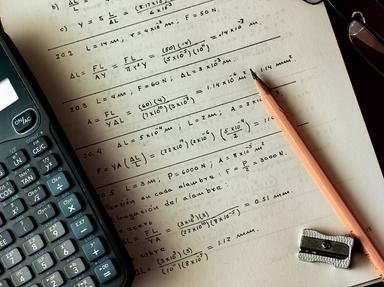Quiz Answer Key and Fun Facts
1. The gradient of the secant to the curve y=f(x), passing through the points (x,f(x)) and (a,f(a)) is given by which expression?
2. The differentiation of a function by first principles is given by which expression?
3. What is the gradient of the tangent to the curve y=3x^2 at the point x=2?
4. What is the derivative of the function f(x)=x^2-4x-3?
5. What is the derivative of the function f(x)=sqrt(x)?
6. What is the derivative of the function f(x)=(2x+7)^5?
7. Using the product rule, what is the derivative of the function f(x)=2x^5 (5x+7)^3?
8. Using the quotient rule, what is the derivative of the function
f(x)=(3x-5)/(5x+2)?
9. What is the equation of the tangent to the curve y=2x^3-7 at the point where x=1?
10. What is the equation of the normal to the curve y=(2x+3)/(5x-1) at the point
(-1,(-1/6))?
Source: Author
dialga483
This quiz was reviewed by FunTrivia editor
WesleyCrusher before going online.
Any errors found in FunTrivia content are routinely corrected through our feedback system.
